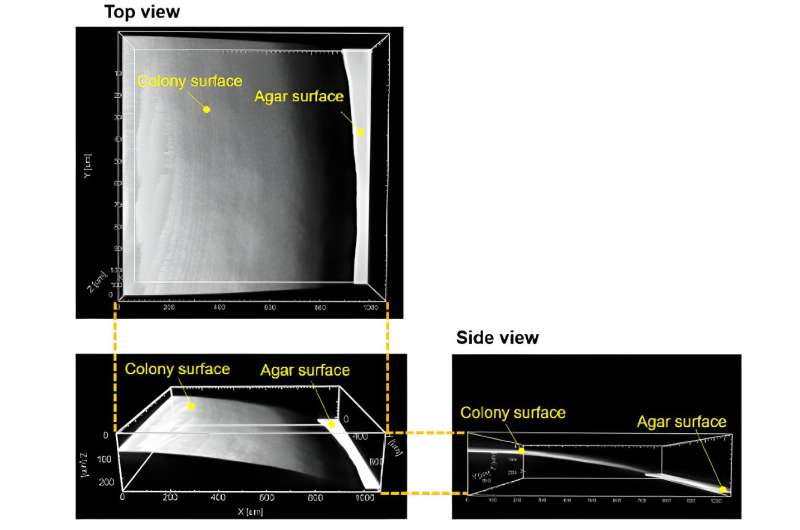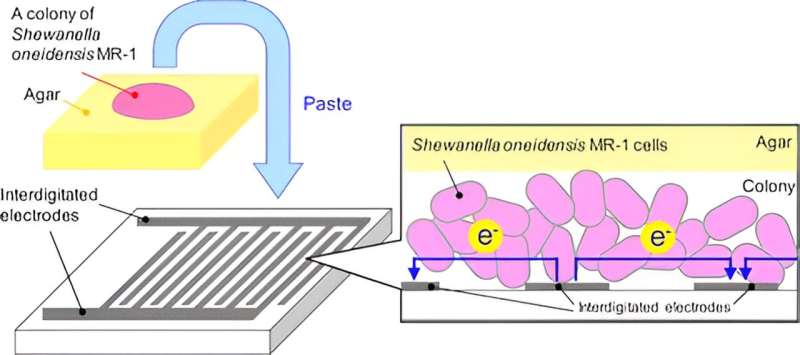This article has been reviewed according to Science X's editorial process and policies. Editors have highlighted the following attributes while ensuring the content's credibility:
fact-checked
trusted source
proofread
A new method for successfully measuring electrical conductivity in microorganisms

Researchers from the University of Tsukuba have developed an innovative methodology for measuring the electrical conductivity of microbial communities. This methodology holds promise for the development of batteries and electrochemical sensors using microorganisms and may serve as a pivotal tool in elucidating the role of electricity within microbial ecosystems.
Although individual microorganisms are invisible, groups of tens or hundreds of millions of microorganisms can form biofilms that are visible to the naked eye. Biofilms facilitate functional differentiation and intercellular communication among microorganisms, enabling them to establish various survival strategies.
Recently, researchers have discovered that some microorganisms are electro-active, i.e., they allow electricity to flow through biofilms. This phenomenon in biofilms has been used to develop various environmental and energy technologies, including microbial fuel cells, anaerobic digestion, and electrochemical sensors.
However, the extent of the impact of electrical conduction on microbial ecology and universality of electrical conduction in the microbial world remain unclear. This is primarily due to challenges in measuring electrical conductivity in microorganisms, necessitating biofilm formation on electrodes.
In a new study published in Environmental Science & Technology, the researchers established a novel bioelectronic system that bypasses the need for biofilm formation on the electrode. They developed a straightforward experimental setup in which a microbial colony, a form of biofilm, was grown on agar and directly pressed onto an electrode to assess its electrical conductivity.

Given that most culturable bacteria form colonies, this method can greatly expand the range of microorganisms whose conductivity can be measured. The application of this technique has revealed that Pseudomonas aeruginosa, an opportunistic bacterium, and Bacillus subtilis, commonly found in the environment, possess conductive properties.
In addition, this approach has facilitated the investigation into molecular mechanisms underlying electrical conductivity in Shewanella oneidensis MR-1, a model electrogenic microorganism.
The findings from this research are anticipated to be applied to the selection of microorganisms for the advancement of environmental and energy technologies such as microbial fuel cells, anaerobic digestion, and electrochemical sensors. Furthermore, this methodology is expected to accelerate the elucidation of the electrical ecology of microorganisms.
More information: Yoshihide Tokunou et al, Colony-Based Electrochemistry Reveals Electron Conduction Mechanisms Mediated by Cytochromes and Flavins in Shewanella oneidensis, Environmental Science & Technology (2024). DOI: 10.1021/acs.est.4c00007
Provided by University of Tsukuba




















